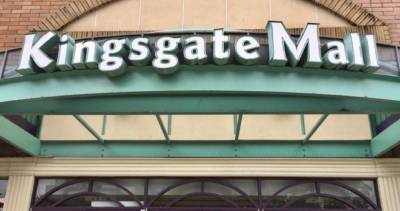Vancouver built 600 housing units for the homeless in one year—what's next?
Earlier this week (March 3), Vancouver mayor Kennedy Stewart stood alongside NDP MLAs to announce that the city and province had fulfilled a promise to construct 600 units of temporary modular housing for people who were previously homeless or at a high risk of becoming homeless.
Spread across 11 sites, the buildings—consisting of units similar to construction-site trailers but outfitted with additional amenities—advanced from planning to construction to habitation in barely more than a year. Completion comes just in time for an assessment of the project’s effectiveness: on March 12 and 13, Vancouver will conduct its annual homeless count.
The city’s 2018 homeless count revealed that there were 1,522 people sleeping in shelters and another 659 on the streets. Stakeholders will be watching the 2019 count for any impact the temporary modular housing sites might have on homelessness in Vancouver.
In a telephone interview, NPA city councillor Melissa De Genova said that it is now time for the city to turn its attention to permanent affordable housing.
“These are called temporary modular housing units,” she told the Georgia Straight. “We need to be looking at a long-term plan.”
De Genova said she considers the project a success and “wouldn’t say no” to similar developments in the future. But she added that she also has concerns and would prefer to see social-housing projects with a more mixed character, “to not necessarily continue building 100-percent social housing in a building. I argue with some of my council colleagues on that, because I feel that that really ghettoizes people.”
De Genova noted it was just last week that council voted in favour of a large project that could serve as a model for the sort of “integrated housing” she has in mind. On February 21, councillors approved the construction of an addictions-treatment facility at the intersection of Clark Drive and East 1st Avenue. It will include 90 housing units, half of which are planned to rent at Housing Income Limits and half of which will rent at Canada Mortgage and Housing Corporation market rates for private rentals in the area.
“Individuals really want their door to be no different than anyone else’s,” De Genova said. “They want dignity in housing.”
Jens von Bergmann is a mathematician and analyst who creates interactive visuals of Vancouver housing and demographic data at his website, censusmapper.ca. He told the Straight that numbers alone can’t tell Vancouver exactly where to focus next, but they can provide suggestions.
“One metric that is important is the vacancy rate,” von Bergmann said. Vancouver’s rental-vacancy rate has remained below two percent for more than a decade; in recent years, it has fallen below one percent.
“Every kind of housing is good, but rental housing has some added advantages,” von Bergmann continued. “We know it is going to get utilized. Ninety-nine percent of those units are going to be filled.
“We have to keep going with these modular homes,” he added. “But asking what is next, I think a focus on rental would be very useful.”















Comments